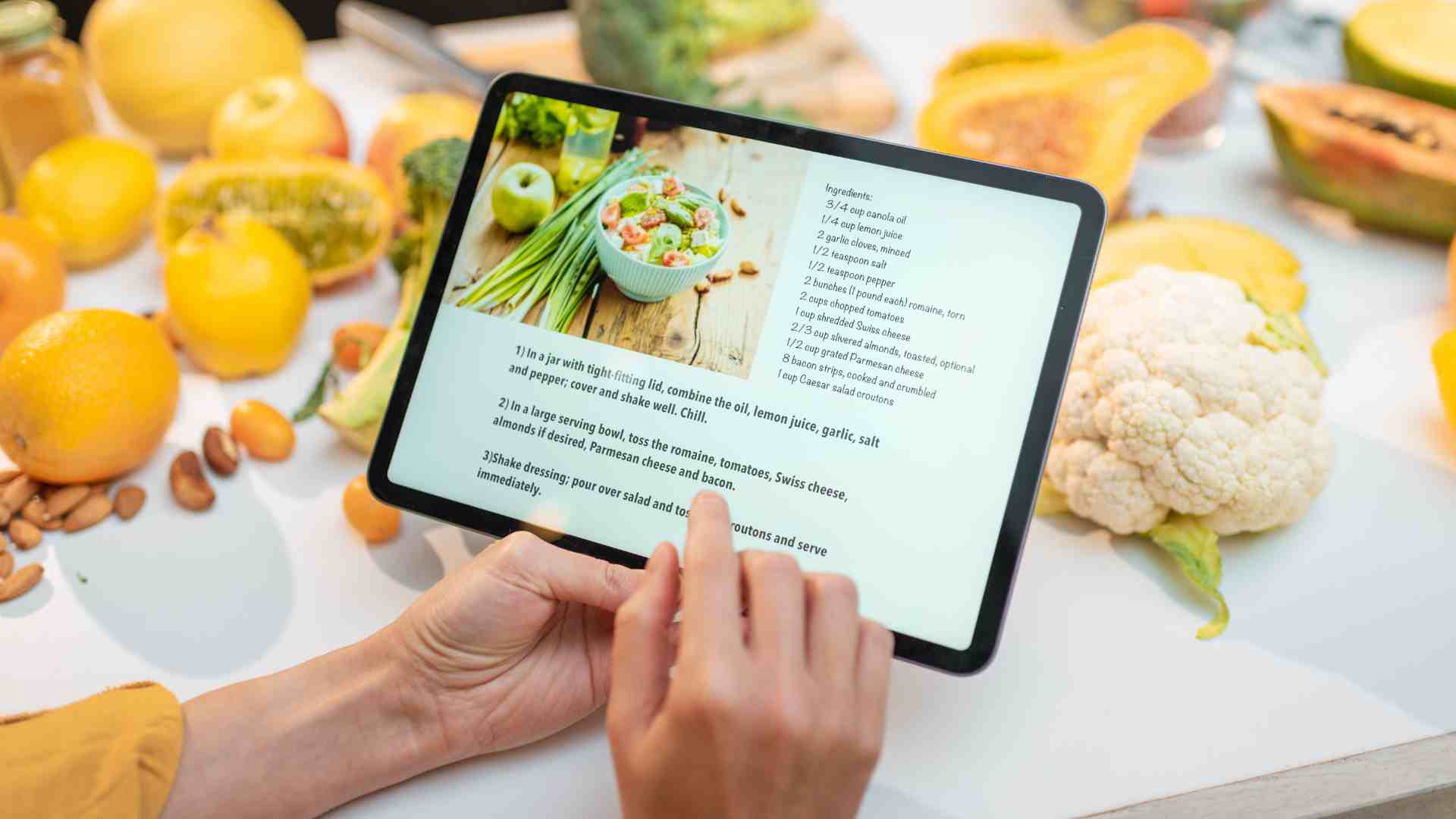How to Create a Recipe Roundup for Your Food Blog
Recipe roundups are a powerful tool for food bloggers looking to engage their audience, boost traffic, and enhance their blog’s visibility. These curated collections of recipes, organized around a specific theme, occasion, or dietary preference, not only inspire readers but also improve user experience and search engine optimization (SEO). By creating well-structured, visually appealing recipe roundups, bloggers can showcase their expertise, cater to diverse audiences, and drive more interaction on their site.
This guide will dive deep into what recipe roundups are, why they’re essential for food blogs, and how to create them effectively using tools like WP Recipe Maker and Tasty Roundups. We’ll also explore strategies to optimize your roundups for SEO, engage your audience, and monetize your content, all while providing practical tips and insights from real users.
What Are Recipe Roundups?
A recipe roundup is a curated list of recipes centered around a specific theme, occasion, or category. For example, you might create a roundup titled “10 Quick Weeknight Dinners” or “Vegan Desserts for the Holidays.” These collections make it easy for readers to find inspiration and explore multiple recipes in one place, increasing the time they spend on your blog.
Roundups can focus on:
- Seasonal: 20 Cozy Fall Soup Recipes
- Dietary: 15 Vegan Desserts for Summer
- Equipment-Based: 10 Easy Air Fryer Dinners
- Occasion-Based: Best Thanksgiving Side Dishes
- Quick Meals: 30-Minute Weeknight Dinners
By organizing recipes into themed collections, bloggers help readers quickly find content that matches their needs, whether they’re planning a family dinner or exploring a new diet.
Why Recipe Roundups Are Essential for Food Blogs
Recipe roundups offer numerous benefits that can elevate your food blog’s performance and appeal. Here’s why they’re a must-have:
1. Boost SEO and Organic Traffic
Search engines reward websites that provide valuable, well-organized content. Recipe roundups target specific keywords (e.g., “easy vegan breakfast ideas”) and can rank higher in search results, driving organic traffic. By including internal links to your own recipes and external links to reputable sources, you enhance your blog’s authority.
2. Increase Audience Engagement
Roundups encourage readers to explore multiple recipes, reducing bounce rates and increasing time spent on your site. For example, a visitor searching for “healthy dinner ideas” might browse several recipes in your roundup, leading to higher engagement metrics.
3. Cater to Diverse Audiences
By covering a range of themes and dietary preferences, roundups appeal to a broader audience. A single roundup can include vegan, gluten-free, and kid-friendly options, ensuring inclusivity and attracting new readers.
4. Showcase Creativity and Expertise
Roundups allow you to highlight your culinary knowledge and creativity. Curating a unique collection, like “5 Creative Twists on Classic Tacos,” positions you as an authority in your niche.
5. Enhance User Experience
Well-organized roundups make navigation seamless. Features like jump-to-recipe buttons and clear categories help readers find exactly what they’re looking for without frustration.
6. Monetization Opportunities
Roundups can include affiliate links to kitchen tools, ingredients, or cookbooks, generating additional revenue. For example, a roundup of air fryer recipes could link to recommended air fryer models.
7. Social Media Shareability
Visually appealing roundups with high-quality images are perfect for sharing on platforms like Pinterest, Instagram, and Facebook. A single roundup can spark conversations and drive traffic back to your blog.
8. Collaboration Potential
Featuring recipes from other bloggers in your roundup fosters collaboration and networking. In return, they may share your post, expanding your reach.
Table: Benefits of Recipe Roundups
| Benefit | Impact |
|---|---|
| SEO Boost | Higher search rankings and organic traffic |
| Audience Engagement | Longer time on site, lower bounce rates |
| Diverse Appeal | Attracts readers with varied preferences |
| Showcases Expertise | Builds credibility and authority |
| User-Friendly Navigation | Simplifies recipe discovery |
| Monetization | Generates income via affiliate links |
| Social Media Traction | Increases shares and visibility |
| Collaboration Opportunities | Expands network through shared content |
How to Choose the Perfect Recipe Roundup Theme
Selecting the right theme is critical to creating a roundup that resonates with your audience. Here’s how to choose themes that drive engagement:
Understand Your Audience
Use analytics tools (e.g., Google Analytics) and social media insights to identify your readers’ preferences. Are they busy parents looking for quick meals? Health-conscious individuals seeking low-carb recipes? Tailor your themes to their needs.
Focus on Evergreen and Trending Topics
Evergreen themes, like “Family-Friendly Dinners,” remain relevant year-round, ensuring long-term traffic. However, incorporating trending topics, such as “Viral TikTok Recipes,” can attract new readers. Balance both for maximum impact.
Consider Seasons and Occasions
Seasonal themes align with readers’ current needs. For example:
- Spring: Fresh salads and light pasta dishes.
- Summer: Grilled recipes and no-bake desserts.
- Fall: Pumpkin-spiced treats and hearty soups.
- Winter: Comforting casseroles and holiday cookies.
Occasion-based themes, like “Game Day Snacks” or “Valentine’s Day Desserts,” tap into specific events, increasing relevance.
Address Dietary Preferences
Inclusivity is key. Include recipes for various diets, such as:
- Vegan
- Gluten-free
- Keto
- Paleo
- Vegetarian
This ensures your roundup appeals to a wide range of readers, from flexitarians to strict vegans.
Break Down Broad Themes
General themes like “International Cuisine” can be refined into specific niches, such as “Mexican Street Food” or “Italian Comfort Dishes.” This specificity makes your roundup more targeted and searchable.
Example Themes for Recipe Roundups
| Category | Theme Ideas |
|---|---|
| Seasonal | Summer BBQ Recipes, Winter Soup Collection |
| Dietary | Gluten-Free Breakfasts, Vegan Party Appetizers |
| Occasion-Based | Thanksgiving Sides, Super Bowl Snacks |
| Equipment-Based | Air Fryer Dinners, Instant Pot Meals |
| Ingredient-Focused | Zucchini Mains, Chocolate Desserts |
Tools to Create Stunning Recipe Roundups
Creating a professional-looking roundup requires the right tools. Two popular WordPress plugins, WP Recipe Maker and Tasty Roundups, streamline the process and enhance user experience.
WP Recipe Maker: Features and Benefits
WP Recipe Maker is a versatile plugin designed for food bloggers. It simplifies roundup creation with features like:
- Automated Recipe Indexing: Automatically organizes recipes by theme, season, or category, saving time.
- Customizable Templates: Offers ready-made or customizable recipe cards to match your blog’s aesthetic.
- Nutritional Information: Allows you to add calorie counts and macronutrient details, appealing to health-conscious readers.
- Jump-to-Recipe Buttons: Enhances navigation by letting users skip to the recipe.
- SEO Metadata: Adds schema markup, increasing the chance of appearing as a carousel in Google search results.
- Recipe Sorting and Filtering: Enables sorting by popularity, date, or rating for dynamic roundups.
Pricing:
- Free Version: Basic features for recipe cards and indexing.
- Premium: Starts at $49/year for advanced features like nutritional data and customizable templates.
User Reviews:
“WP Recipe Maker transformed my blog. The recipe cards are beautiful, and the jump-to-recipe button keeps my readers happy.” Sarah, Food Blogger
“The nutritional info feature helps me cater to my keto audience. It’s a game-changer.” Mike, Home Cook
Tasty Roundups: Features and Benefits
Tasty Roundups is another powerful plugin for creating visually appealing roundups quickly. Its key features include:
- Block Editor Integration: Seamlessly adds roundup blocks to WordPress posts or pages.
- Automatic Recipe Pulling: Searches and imports recipes from your site with a single click, saving time.
- External Link Support: Allows you to include recipes from other blogs, fostering collaboration.
- Customizable Layouts: Offers grid, list, or alternating image layouts for a polished look.
- SEO Optimization: Includes schema markup to boost search visibility.
- Styling Options: Lets you tweak colors, fonts, and buttons to match your brand.
Pricing:
- Single License: $49/year for one site.
- Bundle (with Tasty Recipes): $99/year for additional recipe card features.
User Reviews:
“Tasty Roundups cut my roundup creation time in half. The search bar makes adding recipes a breeze.” Emily, Food Blogger
“The grid layout looks stunning on mobile. My readers love how easy it is to browse.” Tom, Recipe Site Owner
Comparison Table: WP Recipe Maker vs. Tasty Roundups
| Feature | WP Recipe Maker | Tasty Roundups |
|---|---|---|
| Automated Indexing | Yes | Yes |
| Customizable Templates | Yes (Premium) | Yes |
| Nutritional Data | Yes (Premium) | No |
| External Link Support | Limited | Yes |
| SEO Schema Markup | Yes | Yes |
| Price (Basic) | Free (Premium: $49/year) | $49/year |
| Best For | Detailed recipe cards, nutritional info | Quick roundup creation, external links |
Both plugins are excellent, but WP Recipe Maker is ideal for bloggers prioritizing detailed recipe cards, while Tasty Roundups excels for fast, visually appealing roundups.
Step-by-Step Guide to Creating a Recipe Roundup
Follow these steps to craft a high-quality recipe roundup that captivates your audience:
Step 1: Define Your Theme
Choose a theme based on audience research, seasonal trends, or dietary needs. For example, “30-Minute Dinners for Busy Weeknights” targets time-strapped readers.
Step 2: Select Recipes
Curate a mix of your own recipes and, if desired, those from other bloggers. Aim for variety in flavors, difficulty levels, and dietary options. For a 10-recipe roundup, include:
- 2-3 beginner-friendly recipes
- 2-3 intermediate recipes
- 1-2 advanced recipes
- 2-3 recipes catering to specific diets (e.g., vegan, gluten-free)
Step 3: Install a Plugin
Download and activate WP Recipe Maker or Tasty Roundups from the WordPress plugin directory. Configure settings to match your blog’s style.
Step 4: Create the Roundup Post
With WP Recipe Maker:
- Create a new post in WordPress.
- Use the plugin’s shortcode or block to add recipes.
- Customize templates and add nutritional data if needed.
- Embed recipes with images and jump-to-recipe buttons.
With Tasty Roundups:
- Add a Tasty Roundups block to a new or existing post.
- Search for internal recipes or paste external URLs.
- Choose a layout (grid or list) and style the block.
- Add descriptions and images for each recipe.
Step 5: Optimize for SEO
- Use relevant keywords in the title, headings, and meta description (e.g., “easy weeknight dinner recipes”).
- Add alt text to images for accessibility and SEO.
- Include internal links to related posts and external links to credible sources.
- Ensure your plugin adds schema markup for better search visibility.
Step 6: Add Visual Appeal
Use high-quality, consistent images for each recipe. If including external recipes, choose sources with professional photography. Plugins like Tasty Roundups allow you to adjust image sizes and layouts for a cohesive look.
Step 7: Credit Sources
Always link back to original recipes when featuring external content. This builds trust and encourages reciprocal sharing.
Step 8: Publish and Promote
Review your roundup for accuracy and functionality, then hit publish. Promote it via:
- Social Media: Share on Pinterest with a tall, text-overlay image.
- Email Newsletters: Highlight the roundup to your subscribers.
- Collaborations: Ask featured bloggers to share the post.
Step 9: Monitor Performance
Use Google Analytics to track page views, time on page, and bounce rates. Update the roundup periodically with new recipes to keep it fresh.
Advanced Tips for Maximizing Roundup Impact
To take your recipe roundups to the next level, implement these strategies:
1. Leverage Analytics
Analyze which roundups perform best and why. For example, if “Air Fryer Snacks” gets more clicks than “Slow Cooker Soups,” create more equipment-based roundups.
2. Collaborate Strategically
Join Facebook groups like “Roundup Palooza” to find recipes for your roundup. Offer to feature other bloggers’ content in exchange for backlinks or social shares.
3. Monetize Effectively
Embed affiliate links to products mentioned in your roundup (e.g., an Instant Pot for a pressure cooker roundup). Use plugins like ThirstyAffiliates to track clicks and earnings.
| Method | How It Works | Potential Earnings |
|---|---|---|
| Affiliate Links | Link to kitchen tools, ingredients | 0.50−0.50−5 per click |
| Sponsored Posts | Brands pay for featured recipes | 100−100−1,000+ per post |
| Ad Revenue | Display ads (Mediavine, Raptive) | 15−15−50 RPM |
| Digital Products | Sell e-books or meal plans | 10−10−50 per sale |
4. Update Regularly
Refresh older roundups with new recipes or seasonal twists. For example, update a “Holiday Desserts” roundup each year with trending treats.
5. Engage with Readers
Encourage comments by asking questions like, “Which recipe will you try first?” Respond promptly to build a community around your content.
Chart: Traffic Growth from Recipe Roundups
| Month | Roundups Published | Organic Traffic Increase |
|---|---|---|
| 1 | 2 | 10% |
| 3 | 6 | 25% |
| 6 | 12 | 40% |
| 12 | 24 | 60% |
Note: Results vary based on niche, SEO efforts, and promotion.
Common Mistakes to Avoid
- Overloading with Recipes: Stick to 10-15 recipes for digestibility. Too many overwhelm readers.
- Ignoring SEO: Skipping keywords or schema markup reduces visibility.
- Inconsistent Imagery: Mixed-quality photos make your roundup look unprofessional.
- Neglecting Promotion: Relying solely on organic traffic limits reach.
- Outdated Content: Failing to update roundups leads to broken links or irrelevant recipes.
User Insights and Community Tips
Food bloggers in online communities like Facebook groups emphasize the following:
“Create content first. You need recipes ready when roundup requests come up.” Joanne, UglyDucklingBakery
“Curate unique recipes that stand out, not just Google’s top results.” Christine, HappyVeggieKitchen
“Avoid submitting similar recipes to what’s already been shared in a roundup request.” Rachel, Gingerdivine
These insights highlight the importance of originality, preparedness, and strategic collaboration.
Conclusion
Recipe roundups are a cornerstone of successful food blogging, offering a win-win for bloggers and readers. They drive traffic, enhance engagement, and showcase your culinary expertise while providing readers with inspiration and convenience. By choosing compelling themes, using tools like WP Recipe Maker or Tasty Roundups, and optimizing for SEO, you can create roundups that rank well and resonate with your audience.
Start small with a single roundup, experiment with themes, and track performance to refine your approach. Whether you’re highlighting “Cozy Fall Soups” or “Quick Vegan Snacks,” the right roundup can transform your blog into a go-to resource for home cooks everywhere.
Call to Action: Ready to create your first recipe roundup? Download WP Recipe Maker or Tasty Roundups today and start curating content that keeps readers coming back for more. What theme will you choose? Share your ideas in the comments below!
Please share this How to Create a Recipe Roundup for Your Food Blog with your friends and do a comment below about your feedback.
We will meet you on next article.
Until you can read, 8 Easy Holiday Content Ideas for Food Bloggers







This post was super helpful! I’ve always wanted to make a recipe roundup but didn’t know where to start. The step-by-step tips were clear and easy to follow. I loved how practical it was—definitely bookmarking this one!
Super helpful and clear! Made my first roundup post in no time. Thanks!